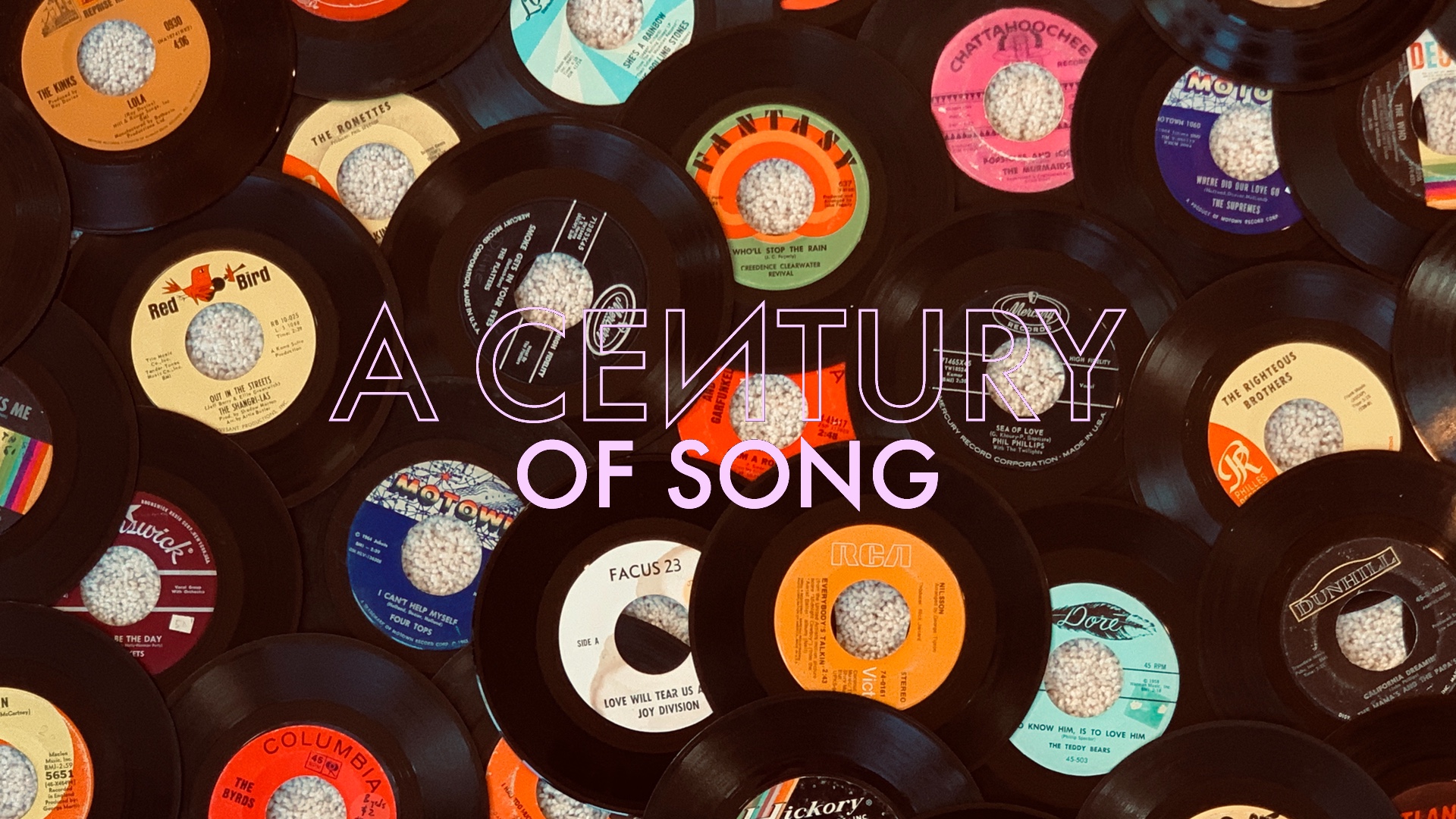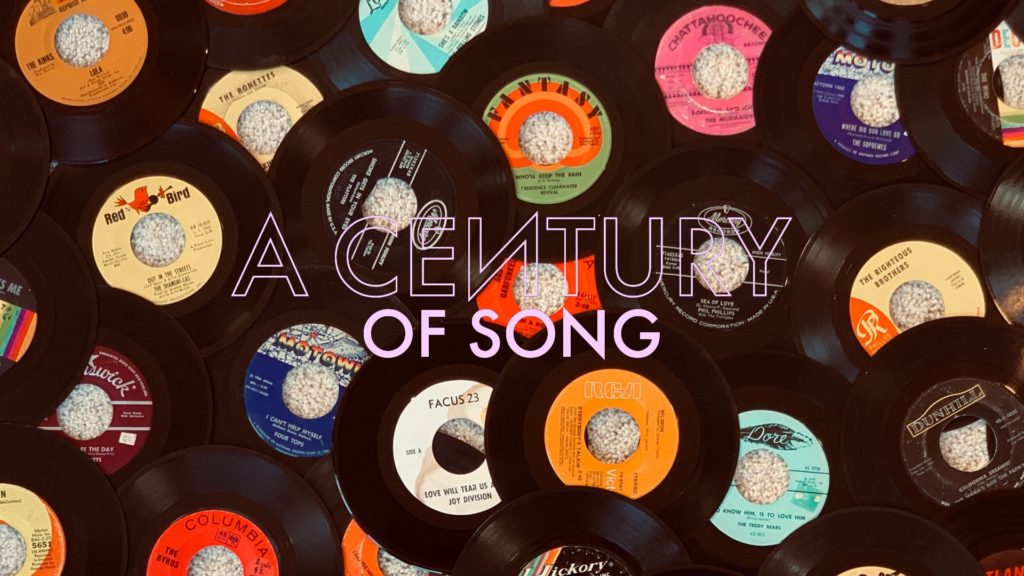
A Century of Song is an attempt to summarize 100 years of popular music through 1000 carefully chosen tracks. Included within this list are landmark singles, stellar album cuts, huge hits, hidden gems, and more than a few personal favorites. Read the introduction for the project here, and enjoy the embedded videos and Spotify playlist.
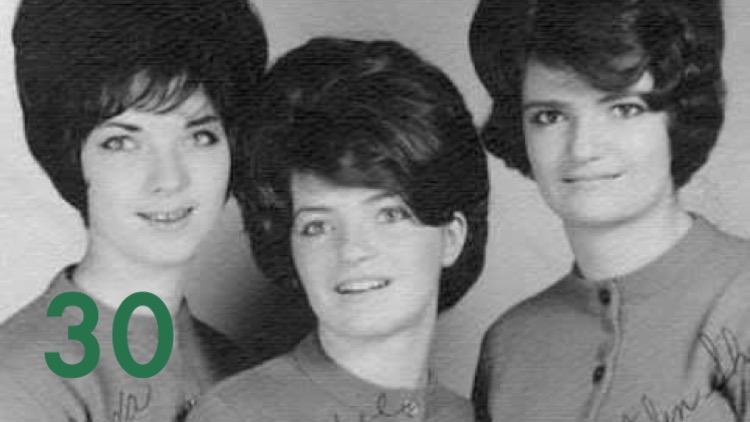

Seriously, how does this song even exist? How was it recorded in 1963? How is it that a group of high school girls from rural Pennsylvania – I’ve seen alternating claims of them coming from either Pleasantville or Oil City – happens to create such an “out there” song? How is it that it went virtually unnoticed for decades after its release? How is it that it’s still only known among a relatively small group of sixties pop fanatics?
The road to “Egyptian Shumba” began in 1962, when sisters Gretchen and Cathy Owens formed The Tammys with their friend Linda Jones. The trio managed to catch the attention of a young singer/songwriter, Lou Christie, who – after scoring a hit with the song “The Gypsy Cried” – offered to have the group sing on several of his subsequent recordings. Eventually, Christie and his songwriting partner Twyla Herbert composed a handful of songs with the idea that The Tammys would record them. The most notable of these tracks, “Egyptian Shumba” was recorded and released in late 1963, but ultimately failed to have much of an impact outside of the Pittsburgh radio market. For the next forty years, it would linger in near total obscurity.
I first became aware of “Egyptian Shumba” a few years ago, after hearing it as part of the Rhino box set, One Kiss Can Lead To Another: Girl Group Sounds Lost And Found. My initial listen was probably par for the course; the opening thirty seconds seem to attract and repel in equal measure for most of the listeners that I’ve since shared it with, and understandably so. There’s a lot to take in: between Garry Sherman’s bizarrely lush arrangement, a fleet of galloping drums, and The Tammys’ charmingly amateurish vocals.
Then, it happens. This song that is already something of an anachronistic mindfuck gives up any sense of restraint, in the most deliriously abandoned chorus you will ever hear. No other song of its time – even among the most wildly punk-predicting garage bands of the mid-sixties – lets loose on anywhere near the same level as “Egyptian Shumba.” However, what begins as shocking goes from arresting, to invigorating, to endearing in a manner of moments. Incidentally, as soon as my first listen ended, I queued the song up again. By the end of that day, I had listened to it eight times.
While the sound of “Egyptian Shumba” was without precedent, one should also consider its historical context and significant subtext. 1963 was the same year in which Betty Friedan published her groundbreaking book, The Feminine Mystique, a work that – in its bold challenging of gender roles and norms – created a tidal wave of controversy, particularly within so-called “Middle America.” In The Tammys, you had three girls who seemed destined for the very kind of quotidian, middle class, suburban life whose capacity for fulfillment had been called into question by Friedan. With “Egyptian Shumba,” they seem to be kicking and (literally) screaming for an escape into a carefree, hedonistic experience.
That The Tammys’ quest for pop stardom was apparently halted by Cathy Owens’ 1965 marriage only adds to the symbolism and poignancy of an already fascinating track. Depending on one’s vantage point, “Egyptian Shumba” could be seen as the most subversive, the most rebellious, or the most dangerous song in the history of popular music. It’s a god damn shame that virtually no one heard it before its facility to inspire others to follow its lead had largely subsided. Instead, what remains is a simply brilliant pop song.
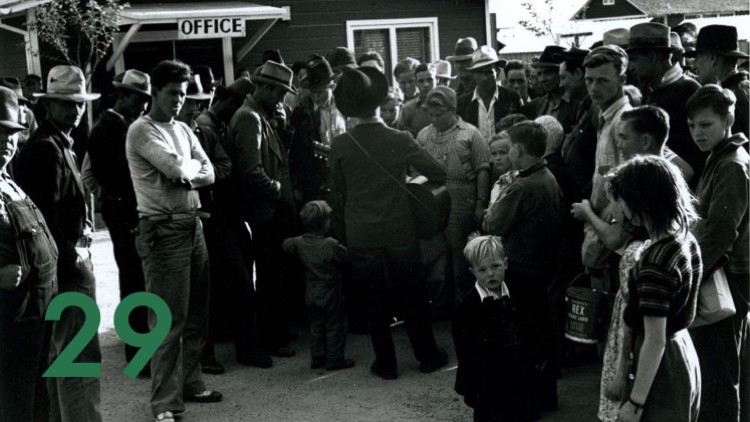

Woody Guthrie’s masterpiece is one of the most familiar American songs ever written, but it also remains one of the most misunderstood. Though not explicitly considered to be one of his Dust Bowl Ballads, “This Land is Your Land” was unquestionably informed by Guthrie’s travels among Okie migrants during the 1930s – a time in which he, and countless of his fellow countrymen, were questioning the very fabric upon which American society had been built.
Famously penned as a response to Irving Berlin’s cloying “God Bless America” – and its then-inescapable hit rendition by Kate Smith – “This Land is Your Land” found Guthrie aiming to write about his nation, as he saw it. Despite its relatively simple language, the song managed to capture the beautiful complexity of America in a series of verses – some familiar, and some less so – that originally contained a somewhat-sarcastic refrain that echoed Berlin’s song (“God blessed America for me”). However, in either a fit of inspiration or editorial restraint, Guthrie reworked the refrain into its now-familiar form.
The idea of this land being “made for you and me” may have sounded patriotic upon first glance – and Guthrie undoubtedly wrote the song with a certain sense of American pride – but beneath the track’s exterior laid a deeper message: one that questioned the fairness and justice of a system that had left so many people with so little. To him, it was a challenge against the complacent sentiments of “God Bless America,” one arguing that the country Guthrie loved could do better to love its people in return. Consider the song’s frequently omitted fourth verse, captured in a 1944 recording:
There was a big high wall there that tried to stop me;
Sign was painted, said ‘private property’;
But on the back side it didn’t say nothing;
This land was made for you and me
This verse, alongside Guthrie’s own dabbling in communist circles – he wrote a regular feature for the communist newspaper, People’s World, but never actually joined the American Communist Party – would help to cast him as something of a radical figure. However, based on the suffering that he witnessed in Oklahoma, California, and all points in between, Guthrie was merely providing a voice for the voiceless. In the last verse – also generally omitted – his once-declarative statement is rephrased as a question:
In the squares of the city, In the shadow of a steeple;
By the relief office, I’d seen my people.
As they stood there hungry, I stood there asking,
Is this land made for you and me?
For decades, there has been an ongoing conversation among progressive Americans about rechristening “This Land is Your Land” as a new national anthem; there’s also been understandable pushback among those who feel that the short-hand interpretation of its famous refrain only underscores the fact that “this land” was stolen from its original inhabitants. These very conversations – and the many nuances, interpretations, and perspectives that it brings into question – certainly make the song a fitting theme for a nation defined by such complexities. At least a more fitting theme than the one we’ve already got.
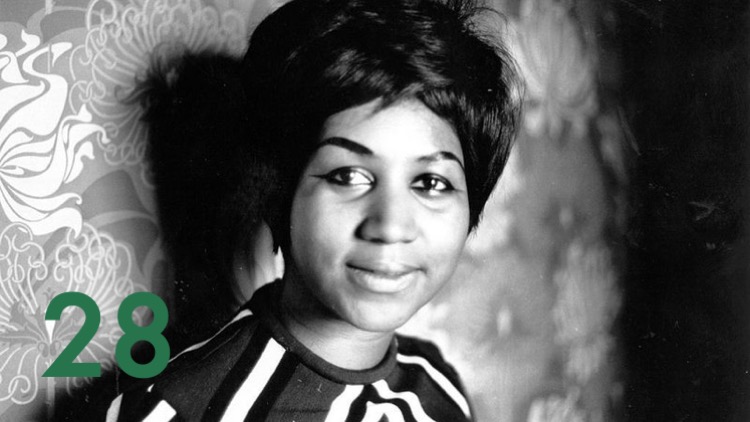

Otis Redding wrote “Respect” in 1965, and released it as the second single to that year’s masterful LP, Otis Blue. An easy highlight on a record with no low points, the track’s driving rhythm and Redding’s dynamic vocal performance made for one of the most compelling recordings in the great soul singer’s discography. However, within two years of its release, Redding’s version would become a mere footnote – an afterthought in the wake of Aretha Franklin’s definitive take of the song.
Aretha had been something of a child prodigy; her commanding vocals served as the frequent highpoint of her father’s services at Detroit’s New Bethel Baptist Church. While live performances had made Franklin a hit on the touring circuit, her recording career seemed to be stuck in first gear during her six-year tenure with Columbia Records. In 1966, following the ending of her contract with Columbia, Franklin departed for the more artist-friendly reputation of Atlantic Records. Right off the bat, Aretha seemed more at home with Atlantic. Her first single for the label – “I Never Loved a Man (The Way I Love You)” – reached the top ten of the American pop charts. Its follow up would make her a legend.
Appearing as the opening track to Franklin’s Atlantic debut, “Respect” was a near-complete overhaul of Redding’s already powerful song. Whereas Otis’ “Respect” was marked by a pleading sense of desperation, Aretha’s was authoritative and unforgettable. Even as an instrumental it would’ve turned heads – with the Muscle Shoals Rhythm Section turning in a powerhouse blast of deep soul – but Franklin delivered an assertive performance that still remains virtually unmatched in the history of popular music.
The biggest departure from Redding’s original take was a host of new hooks – lines and interjections that would become instantly iconic upon the song’s release. Aretha – and her backing vocalist sisters, Carolyn and Erma – worked out the new “sock it to me” and “R-E-S-P-E-C-T” features that would help to propel the song to the top of the American pop charts in the summer of 1967.
Of course, “Respect” reached the masses at a particularly critical moment in time for both the Civil Rights and feminist movements. Despite the way the lyrics may read on paper, the song didn’t ask for respect; it demanded it. Arriving at the crux of two movements that hinged upon the very notion of equity, “Respect” would become an obvious anthem for both. Its crystal-clear message, its relentless groove, and its undeniable power still resonate to this day.
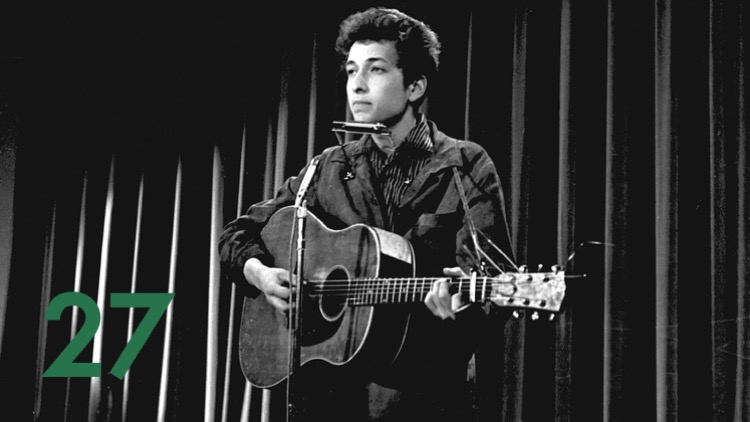

In the summer of 1962 – not during the Cuban Missile Crisis in October, as has often been suggested – Bob Dylan sat in his Greenwich Village apartment, pounding out the lengthy verses that would soon become the greatest protest song he would ever write. Only twenty-one-years-old at the time, Dylan would infuse a lifetime’s worth of wisdom, anxiety, and perspective into “A Hard Rain’s A-Gonna Fall” – the song that would serve as the centerpiece to his 1963 sophomore album, The Freewheelin’ Bob Dylan, and the track that would undeniably make him the central figure of New York’s folk revival scene.
The winding, imagery laden verses that Dylan would become known for made their first appearance on “A Hard Rain’s A-Gonna Fall.” However, unlike the surrealist symbolism that would define his mid-sixties peak, Dylan is alarmingly direct on “Hard Rain.” The images that he paints of a world on the brink of unspeakable disaster are chilling, arresting, and unforgettable. Framing them around an imagined conversation between a parent and their young “blue-eyed son” only makes them more poignant.
The indelible scenes of “Hard Rain” are far too many to mention, but here’s a truncated rundown of those that have always stood out to me: the newborn baby surrounded by wolves, guns and swords in the hands of children, the weeping clown in an alley, the young woman whose body was burning, the anonymous executioner, and the two men wounded – one in love, and the other in hatred.
In just the few years that surrounded the release of “Hard Rain,” each one of these images would be given a real-world counterpart. Consider the haunting pictures of a young Ruby Bridges being escorted to school by armed guards; the young private, known only as “R.C.,” just arriving at Da Nang; Vietnamese children running from American napalm attacks; satellite images of Soviet missile bases in Cuba; the deaths of John F. Kennedy and Martin Luther King. The “hard rain” would come from all angles throughout the sixties, and the generation gap that Dylan alluded to in the song’s conversational device would – in some ways – become insurmountable as the storm grew throughout the decade.
Dylan’s own position in the storm would grow increasingly ambiguous. By 1964, the folk protest songs on which he had made his name began giving way to more introspective, personal material. The mid-sixties would see him wield the most elaborate poetry that popular music had ever witnessed. By decade’s end, he had essentially entered a full-retreat mode. At every turn, old fans would feel alienated. Critics would question his sincerity. Activists would yearn to reenlist the so-called “voice of a generation” back into the fight. Whether he was merely following his muse or actively pushing against the expectations that others had set for him was irrelevant. With “A Hard Rain’s A-Gonna Fall,” Bob Dylan had already said everything that he needed to say.
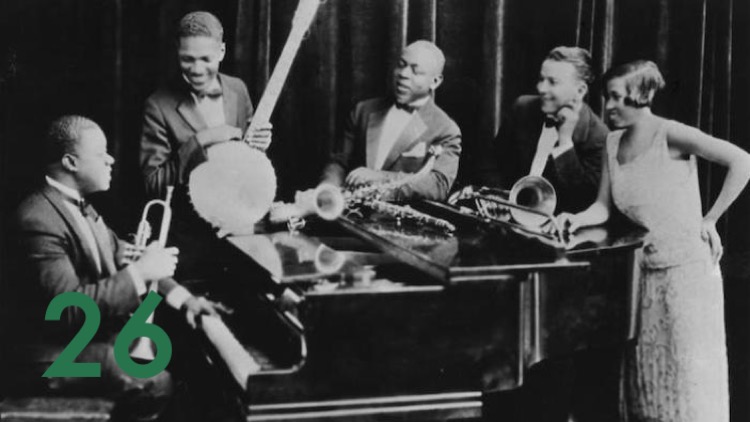

From 1926 to 1928, Louis Armstrong would record approximately sixty tracks with a rotating cast of musicians – a series of studio groups known as the Hot Fives and Hot Sevens. These recordings would ultimately do nothing less than redefine the still-nascent genre of jazz. While it had – by that point – firmly taken root in New Orleans, Chicago, and New York, many outsiders still viewed jazz music as primitive and unsophisticated. Armstrong’s late twenties recordings would be among the first to convince skeptics of both the music’s staying power and its considerable artistic merits. Among those many remarkable tracks, one stands high above the competition.
Written by King Oliver, “West End Blues” was first recorded by his band on June 11, 1928. Just over two weeks later, Armstrong would assemble a group of five backing musicians to record his own version of the song, as something of a tribute to Oliver – the man who had, in 1922, summoned Armstrong to leave New Orleans and join him in Chicago. While its creation was marked by the same spontaneity that characterized his finest work, the track that Louis and his group would make on June 28, 1928 would raise the bar for every jazz recording to follow in its wake.
Opening with Armstrong’s impressive fanfare, “West End Blues” quickly slides into a gentle rhythm. Impossibly laid-back, instrumentally brilliant, and thoroughly charming, the song would ultimately inspire countless jazz scribes to wax poetic about its many innovations. However, beyond its technical achievements, “West End Blues” is simply a stunning listening experience. Armstrong’s melodic sensibilities were never stronger. His playing was never more fluid. While he was as dexterous as ever, “West End Blues” was the sonic equivalent of a warm embrace. The group behind Armstrong similarly balanced its sharp musicianship with measured restraint. In particular, it is pianist Earl Hines whose work stands out. Following Armstrong’s wordless vocal verse, Hines lays out a captivating set of cascading lines – nimble, but appearing almost as if in slow motion.
The cumulative effect of “West End Blues’” many individual virtues is a recording that sounds like nothing that had ever been heard before – perhaps one of the first records that could be aptly described as “dreamlike.” Throughout a career that spanned nearly fifty years, Armstrong would become one of the most beloved entertainers in American history, amassing a catalog that still stands among the most impressive bodies of work of all-time. Despite its uncountable highlights, no track that he ever recorded can hold a candle to these utterly perfect three-and-a-half minutes.
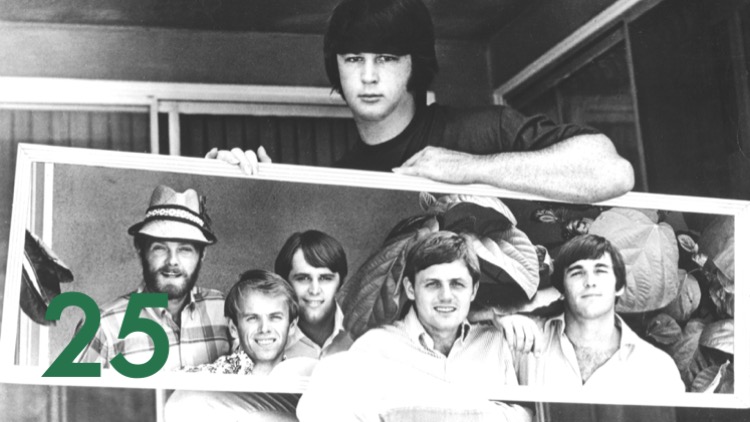

Modular recording. Feels. Pocket symphony. These terms mean little, if anything, to the average person who enjoys “Good Vibrations.” The song was a runaway success for The Beach Boys, but despite its wholly approachable exterior, “Good Vibrations” was a wildly experimental recording – completely unprecedented in the history of popular music. That combination of innovation and accessibility is what makes the track such a remarkable, singular piece of work.
While it contains hooks aplenty, “Good Vibrations” remains a baffling track over a half-century past its release – downright bizarre in its construction, recording, and arrangement. The end result of nearly 100 hours in the studio, it ushered in a new era of complexity in rock music, but refused to sacrifice its melodic sensibilities for the sake of artistry. While labored over for months on end, “Good Vibrations” is – at its core – an irresistible piece of song craft from pop’s most brilliant mind.
That mind, of course, belonged to Brian Wilson: The Beach Boys’ leader, visionary, and resident genius. Initially conceived during the recording of his album-length masterpiece Pet Sounds, “Good Vibrations” was a step in a bold new direction – one that viewed the studio as a vital component to the creative process, not merely a final documentarian of it. Wilson composed “Good Vibrations” by assembling a set of brief musical motifs, which he referred to as “feels.” Each recorded separately in a fashion that Wilson described as “modular,” these feels were ultimately assembled to create a track of previously unheard sophistication – at least for a three-and-a-half-minute pop single.
When completed, Wilson had what he referred to as a “pocket symphony” – the centerpiece for an album that he hoped to record employing the same pioneering process used to create “Good Vibrations.” While that album – the legendary SMiLE project – would ultimately be derailed by numerous complications, its ambassador track was a revolutionary recording that topped the pop charts on both sides of the Atlantic in the fall of 1966. At a time in which the more aggressive sounds of acid rock were on the verge of becoming the prevailing trend in rock music, Wilson’s own unique vision of psychedelia suggested a far more alluring – if far less reproducible – alternative.
While SMiLE would ultimately go down as pop music’s greatest Icarus tale – at least until its eventual completion in 2004, and the subsequent 2011 release of Wilson’s own original sessions – “Good Vibrations” would serve as a tantalizing glimpse into a whole new world of musical possibilities. No less an authority than Brian Wilson himself considers the track to be his greatest accomplishment. It’s one of those all-too-rare recordings that – aside from its countless innovations – manages to sound utterly fresh and original, no matter how many times you hear it.
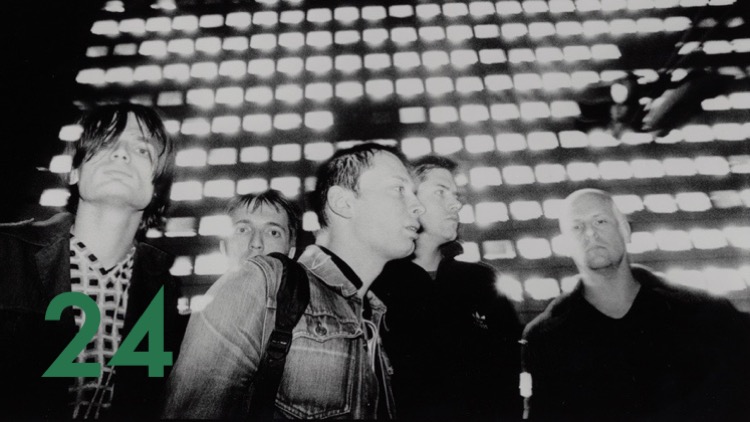

I have described my initial encounter with Radiohead’s OK Computer in several other entries on this list. The unprecedented sound and accompanying vision of “Paranoid Android” (#37), the sinister undercurrents of “Exit Music (For a Film)” (#406), the bittersweet soft landing of “No Surprises” (#248); virtually every moment on the record left an indelible impression in those early listens, but for me, no track from OK Computer resonated more – then or now – than “Let Down.”
“Let Down” has often been described by Radiohead fans as a “grower” – a song that is less immediately attention-grabbing than the more visceral tracks on OK Computer. However, the atmosphere that it conjures is singular, even if its lyrics largely describe the same sense of modern malaise that characterizes so much of the surrounding album. “Jangly” doesn’t even begin to describe the sound of “Let Down.” Imagine the dreamiest work of Johnny Marr, plus Peter Buck at his most melodic, and multiply it by ten. Mix in cascading electronic arpeggios, a warmly understated rhythmic backing, and Thom Yorke’s most gorgeous melody, and you have a track that is thoroughly inviting, but possessing a depth that reveals far more with each listen.
That attention to detail is found in the interweaving guitar lines that form the track’s delicate skeletal structure. It’s found in the restraint that Phil Selway shows before bringing in his full drum kit halfway through the song’s second verse. It’s heard in the way that Yorke’s lead vocal gives way to his harmonies in the track’s final chorus. It’s a meticulous recording, but one that hardly sounds labored over.
There’s an undeniable romanticism that I hold for OK Computer – one particularly associated with those early listens in the fall of 1997. Prior to that time, I genuinely believed that I loved music, and I very well may have. However, this record made nearly everything that I had ever heard before sound unnecessary in comparison. That sense of vitality was something that I never felt before in an album, let alone one released during my own lifetime. I lived through OK Computer in a way that I never had done with any album before, and in a way that I will never experience again.
I listened to virtually nothing else during those ensuing months – save for the Pixies’ back-catalog, which I was discovering simultaneously – but once I felt the urge to hear something other than Radiohead, I reached back to eras and artists that I had never investigated before. I turned to Bob Dylan, The Beatles, The Beach Boys – each of which led me down equally rewarding paths. Exploring those paths is what turned me from a music fan into a music obsessive. Ultimately, those paths led to Strange Currencies. It was a journey whose endpoint first became visible when I heard OK Computer, and this gorgeous track that serves as its beating heart.
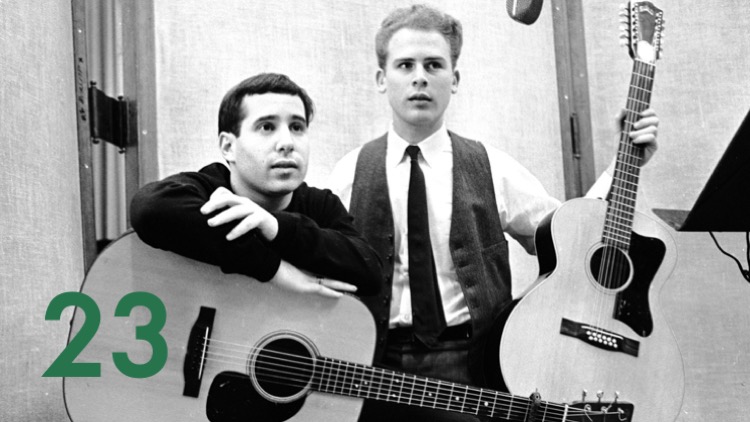

As someone who spends an unreasonable amount of time thinking about music, I have read more than my share of bad music criticism; some might argue that I’ve contributed a bit of it myself, but that’s a debate for a different time. Arguably the worst piece that I’ve ever come across appeared on NBC News last week, when Paul Simon sold his song catalog to Sony for an unspecified amount. Essentially, the crux of the article was that Simon is no Bob Dylan, so – even though he’s made a nice career for himself, nobody will remember him in 200 years. It seems to imply that if that is true, and Simon is no longer at the forefront of pop culture, why even bother discussing him now. Perhaps the author might respond by commenting on the fact that I write for a website that gets 100 views on a good day, but it won’t change the fact that he’s a shitty journalist.
Having recently begun engaging with artist-based Facebook groups, I’ve seen the other side of the spectrum. While the NBC piece reeks of personal vendetta, unabashed fanboy-ism can be just as exhausting. The truth of the matter is that artists, and the catalogs that they build, are complex. Any performer that has been around as long as Dylan or Simon is bound to have peaks and valleys. The peaks are worthy of celebration, the valleys make the peaks seem even more special – especially when they precede great comebacks, like Time Out of Mind or Graceland – and the points in between often make for fascinating debate.
Truth is, few songwriters – living or dead – have a peak that can match the song that introduced Paul Simon to the larger world. Written when he was 21 years old, “The Sound of Silence” initially appeared as the centerpiece to Simon & Garfunkel’s 1964 debut, Wednesday Morning, 3 A.M. It was an overdubbed version of the original recording – which added electric instrumentation that was not unlike that of the recently-arrived Byrds – that would make the song a hit, over a year after its initial release.
“The Sound of Silence” first struck a chord among college-aged listeners; fitting, as Simon’s early writing seems custom built for the dorm room listening of bookish, disaffected youth. However, despite the age of its author – and the crowd for which it originally resonated – there is a depth to the writing that is nothing short of profound. The song’s opening verse remains one of the most intriguing in pop music:
Hello darkness, my old friend
I’ve come to talk with you again
Because a vision softly creeping
Left its seeds while I was sleeping
And the vision that was planted in my brain still remains
Within the sound of silence
The track only becomes more despondent from there, but the harmonized vocals of Paul Simon and Art Garfunkel give the song an emotional resonance that is achingly sincere. Its depiction of broken people, incapable of the communication and connection that might bring about healing (“People talking without speaking, People hearing without listening, People writing songs that voices never share,” “Hear my words that I might teach you, Take my arms that I might reach you”) is heartbreaking, yet oddly comforting when delivered in such a plaintively haunting melody.
“The Sound of Silence” was a touchstone: even before it appeared in Mike Nichols’ 1967 film The Graduate; even before it was repurposed for tragicomic use. Despite what the aforementioned article suggests, I have a feeling that this song will continue to resonate with audiences for generations to come. And, when listeners of the future feel the words and the gorgeous melodies that deliver them, they will undoubtedly inquire about the keen young mind that so poignantly captured the essence of the human condition.
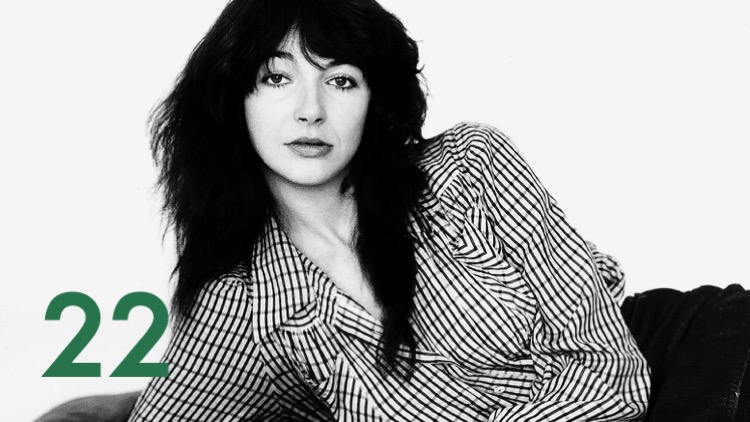

Kate Bush’s 1985 masterpiece – Hounds of Love – is one of the truly singular works in the pop canon. Featuring a flawless first half, and a second side that highlights Bush’s own idiosyncratic, experimental tendencies without abandoning accessibility, the album easily stands among the finest records of its era. Despite the many riches and wonders that dot its forty-eight-minute run-time, Hounds of Love is never more arresting than on its stunning opener, “Running Up That Hill.”
Like much of Hounds of Love, “Running Up That Hill” is defined by Bush’s utilization of the Fairlight CMI synthesizer – the pioneering instrument that forever changed the use of sampling in pop music when it was first introduced in 1979. While she had used the Fairlight to thoroughly impressive effect as far back as 1980’s Never for Ever – and expanded its presence on 1982’s outstanding The Dreaming – Hounds of Love would find Bush taking full advantage of the instrument’s ability to manipulate unconventional sounds to dramatic melodic effect.
Little of this would have mattered if the writing hadn’t been similarly spectacular, and “Running Up That Hill” was Bush’s finest example of song craft to date. The icy synth washes and yelping melodic figure accentuate the emotional range of the track, whose lyrics – even in their minimalistic nature – run the gamut from defiant to resigned. The herculean challenge alluded to in the song’s title and chorus is given an even more insurmountable character by way of the track’s cavernous drum sound, which pushes against a musical backing that is, somehow, simultaneously sparse and lush.
Much has been made about the dated nature of eighties pop music. It’s a conversation that I have engaged in often, and – given the predominance of sixties garage rock, lo-fi indie pop, and first-take jazz recordings on this list – one could probably surmise where I have typically sided in such discussions. While a long-time skeptic of the 80s sound, I’ve softened my stance in recent years. I’m still gonna roll my eyes at most of the musical cues in John Hughes films. I’m still gonna leave the “Electric Piano 2” sound on my keyboard mostly unused. I’m still probably gonna pass on listening to your “Favorite 80s Songs” playlist. However, I’m also willing to admit that there is nothing ephemeral about the appeal of this song. This is art pop for the ages.
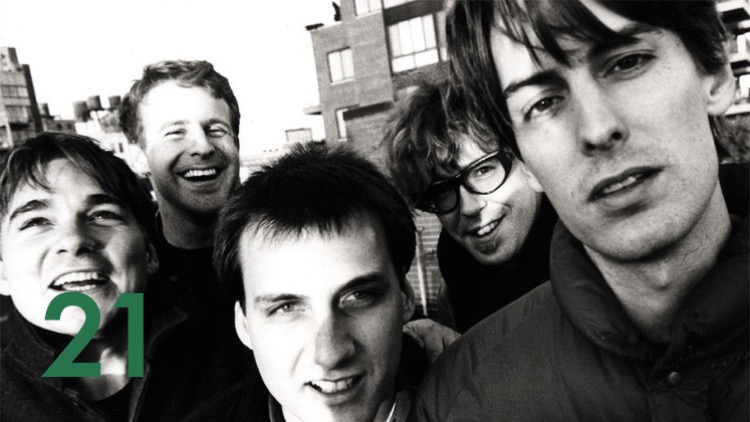

Pavement’s sophomore record – Crooked Rain, Crooked Rain – was already over a year old by the time that I first heard it in the summer of 1995, but there was something so refreshingly different about it that made it an immediate favorite. For the first several years that I had the album, its centerpiece, “Gold Soundz,” was merely just one of the uniformly great songs that made Crooked Rain so endlessly re-playable.
I don’t know why it took so long for me to realize just how remarkable this particular track was – what made it so much better than even “Range Life” (#777), “Stop Breathin,” or “Unfair.” I’m even less certain that I can adequately articulate why it remains such a special moment in the catalog of one of my favorite bands. All I know is that somewhere along the way, “Gold Soundz” went from being simply a great song to becoming quite possibly my favorite song.
What I can say is that “Gold Soundz” somehow manages to evoke – in the best possible way – the most carefree moments of my adolescence. Even if I hadn’t first heard the song at the age of sixteen, it’s hard to imagine that its airy, open-tuned arpeggios wouldn’t immediately conjure up images of the neighborhood that I lived in at the time: streetlights flickering on as a long summer day gives way to nightfall; waiting for my friend’s car to turn the corner, en route to an evening of directionless cruising through the streets of Flagstaff.
The cynic in me feels somewhat inclined to accuse Stephen Malkmus of blatantly manufacturing this kind of nostalgia; after all, the song opens by compelling the listener to “go back to those gold sounds,” but it also contains the immortal line “you can never quarantine the past.” It’s Malkmus’ typically elliptic lyricism that makes “Gold Soundz” the perfect soundtrack to my own version of American Graffiti. Like that aimless cruising, there’s no narrative, just a series of loosely connected, occasionally beautiful moments that somehow add up to a perfectly imperfect whole.
Like the best of those aimless nights, “Gold Soundz” provides one moment of absolute transcendence. Following the song’s second chorus, the rhythm briefly comes to a halt, only to usher in an instrumental section that eventually gives way to the track’s final verse. As the crystalline guitar lines of Malkmus and Scott Kannberg weave in and out of each other, they create a wistful melody that cannot decide if it is rising or falling. Combinations of notes hang in suspended air, only to be replaced by equally charming blends. It is earthbound only because it is fleeting. On a 1991 EP, Pavement had slyly suggested the promise of a “perfect sound forever.” It was in this moment that they delivered on the first part of that promise. Only beyond the folly of youth can we realize that the second part is impossible.


